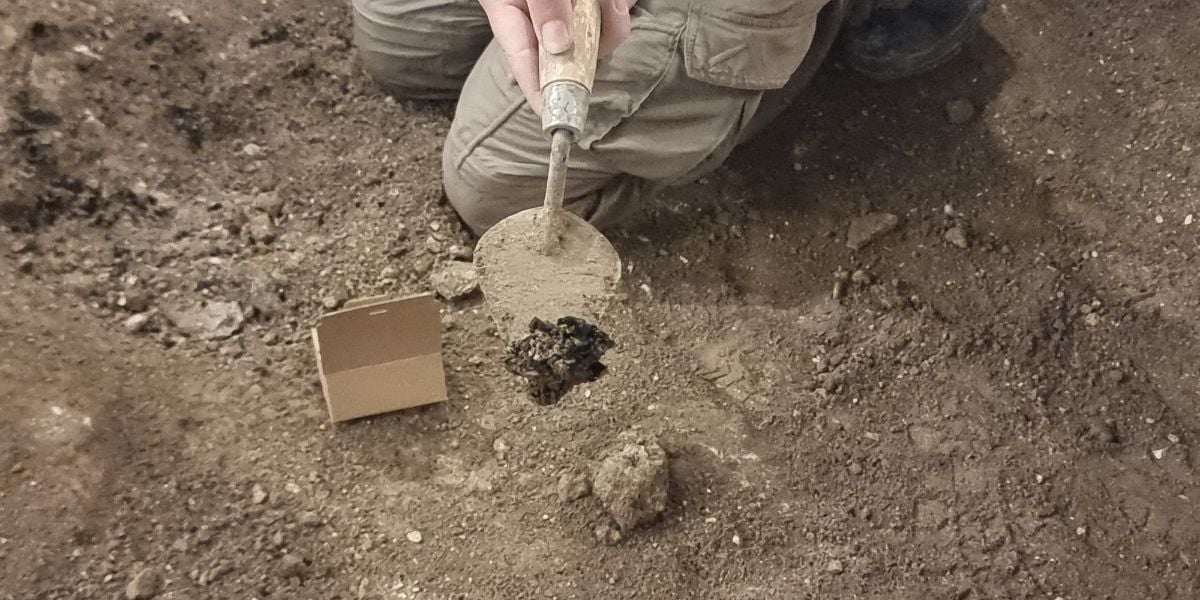Archaeologists from the Israel Antiquities Authority have uncovered new findings that have been preserved from the period of the Second Temple’s destruction, 2,000 years after Jerusalem was set on fire by the Romans. The discoveries were made in recent days in a new excavation site conducted by the Israel Antiquities Authority in the City of David and funded by the Ir David Foundation. They vividly depict the final days of Jerusalem before its destruction.
In the new excavation along the Pilgrims Road, the main thoroughfare of Jerusalem during the Second Temple period, remnants of buildings that collapsed during the destruction were uncovered alongside the road. In one of the excavated buildings, charred wooden beams were found that were burned during the destruction, as well as fragments of ornate stone vessels used by the city’s residents before the destruction, a stone weight, a twisted handle, and a basalt grinding bowl.
Alongside these findings, a coin from the second year of the Great Revolt against the Romans was also discovered, bearing the inscription “For the Freedom of Zion.” After cleaning the coin in the labs of the Israel Antiquities Authority, it became evident that the coin has a hole, and it seems that the hole was made intentionally and was like that from the beginning.
Yaniv David Levy, a researcher in the Coins Department of the Israel Antiquities Authority, explained the significance of the hole: “It is clear that the coin was deliberately pierced, and the hole was not a result of natural wear of the material.” According to him, “the coin was intentionally pierced to enable it to be hung.”
Levi proposes two main possibilities regarding the identity of the person who carried the coin during the days of the revolt: “The identity of the person to whom the coin belonged will probably never be known. However, keeping objects as souvenirs is not a new phenomenon. We have evidence that a Jewish family preserved coins from the Hasmonean period and Jewish revolt over generations and found their end during the Bar Kochba revolt in a shelter cave. Their tragedy allowed us to find these coins together and understand that whoever found his death in the Bar Kochba revolt saw significance in these coins and took them with him into hiding.”
These coins did not have any economic value and were kept as mementos. On the other hand, we also know of cases in which Roman soldiers took coins from defeated Jews as souvenirs, and they were found in several military camps across Europe. In the case of this coin, discovered this week in Jerusalem, it seems that the possibility that the coin was in the hands of a Jew is more reasonable.”
According to the excavation directors on behalf of the Israel Antiquities Authority, Shlomo Greenberg and Rikki Zalut Har-Tuv: “The stone vessels, characteristic of the Second Temple period, which do not accept impurity, alongside the twisted handle, used for producing clothing, and the grinding bowl used for grinding food – all these together paint a human picture of the lives of the residents who lived in Jerusalem prior to the destruction. To return to Jerusalem after 2,000 years and rediscover the remnants of Jerusalem’s destruction, especially in an excavation taking place shortly before Tisha B’Av, is a very moving experience that cannot leave us indifferent.”
Eli Eskozido, Director of the Israel Antiquities Authority, referred to the findings: “There are very few places where you can physically touch the destruction of Jerusalem. Thanks to the new excavation by the Israel Antiquities Authority in the City of David, the horrifying events we read about in history books that led to the fast of Tisha B’Av are now supported by tangible evidence. During these days of internal strife, we must be attentive to the echo that reaches us from the depths of our past and aspire towards unity and connection.”






